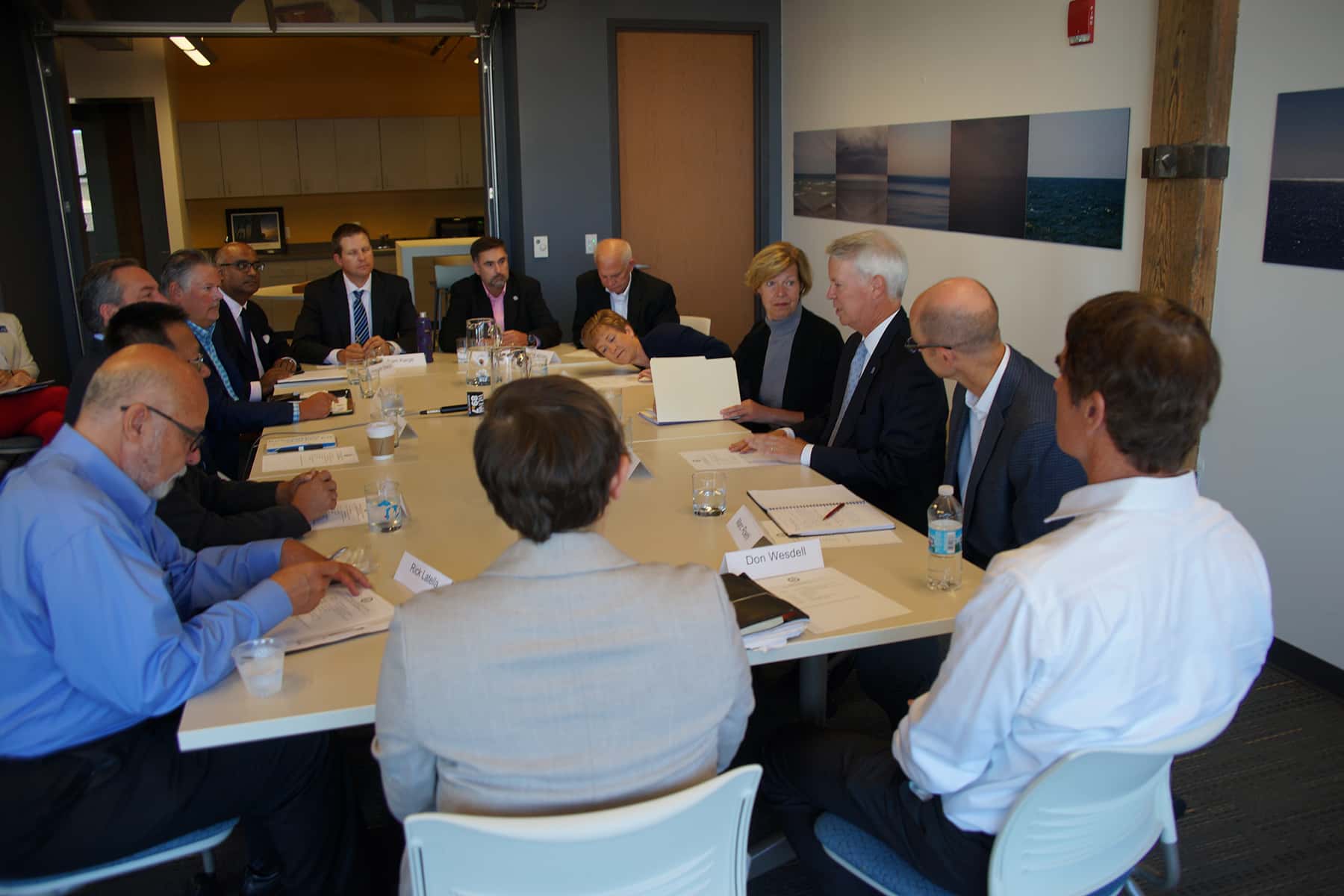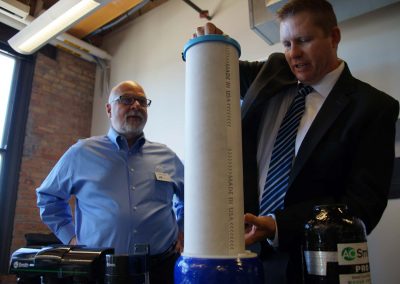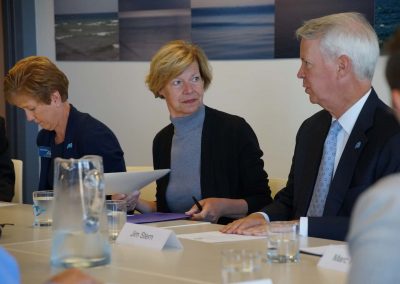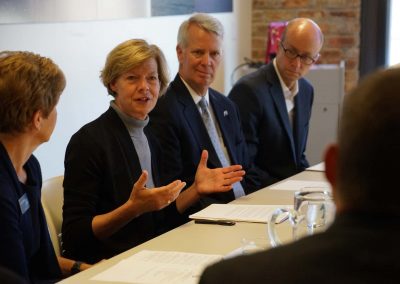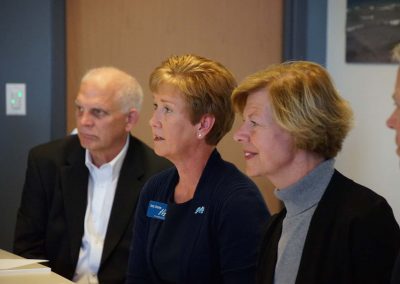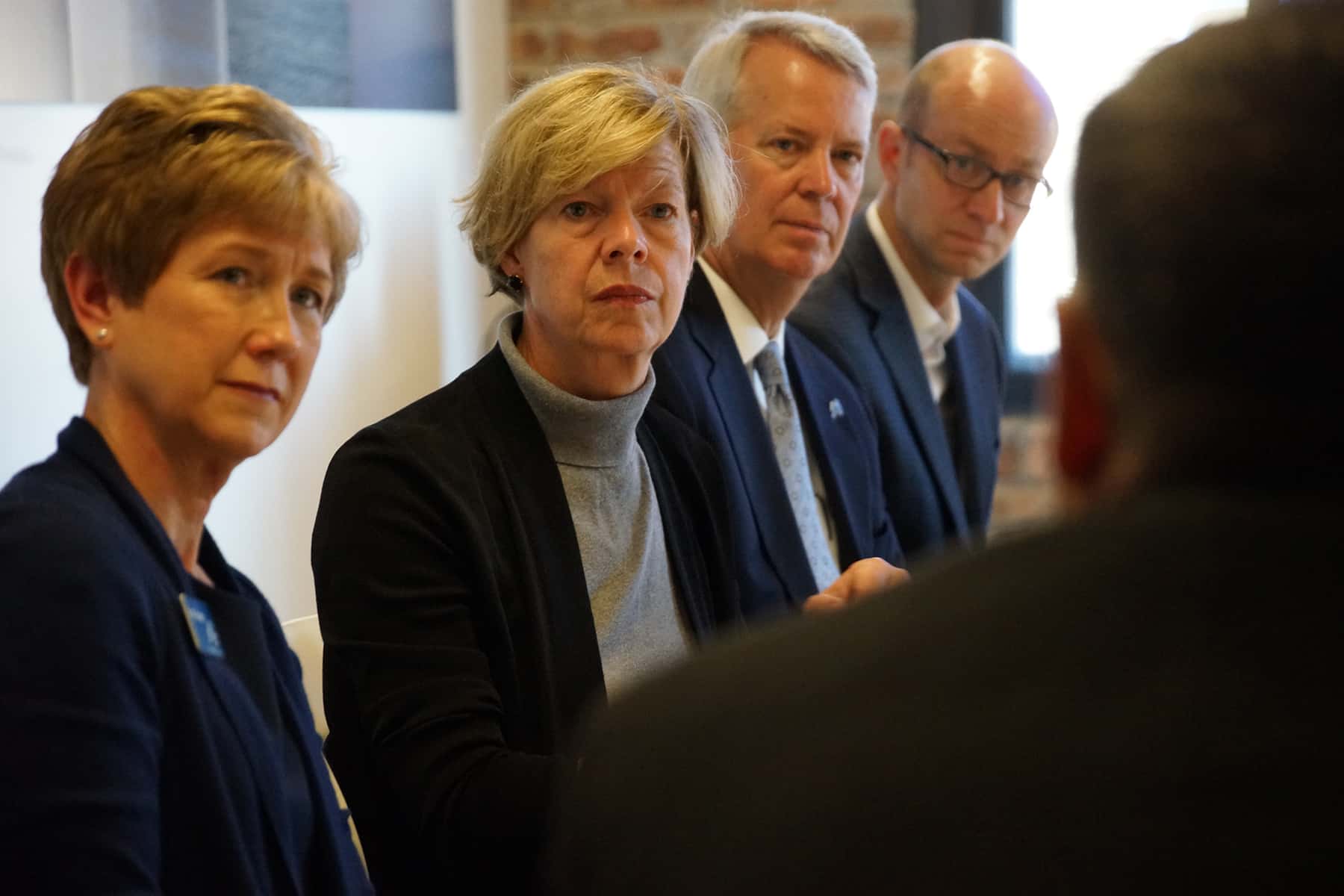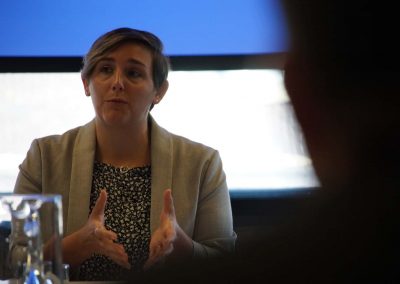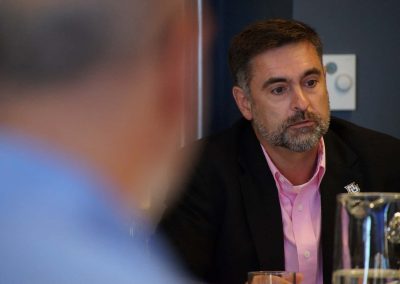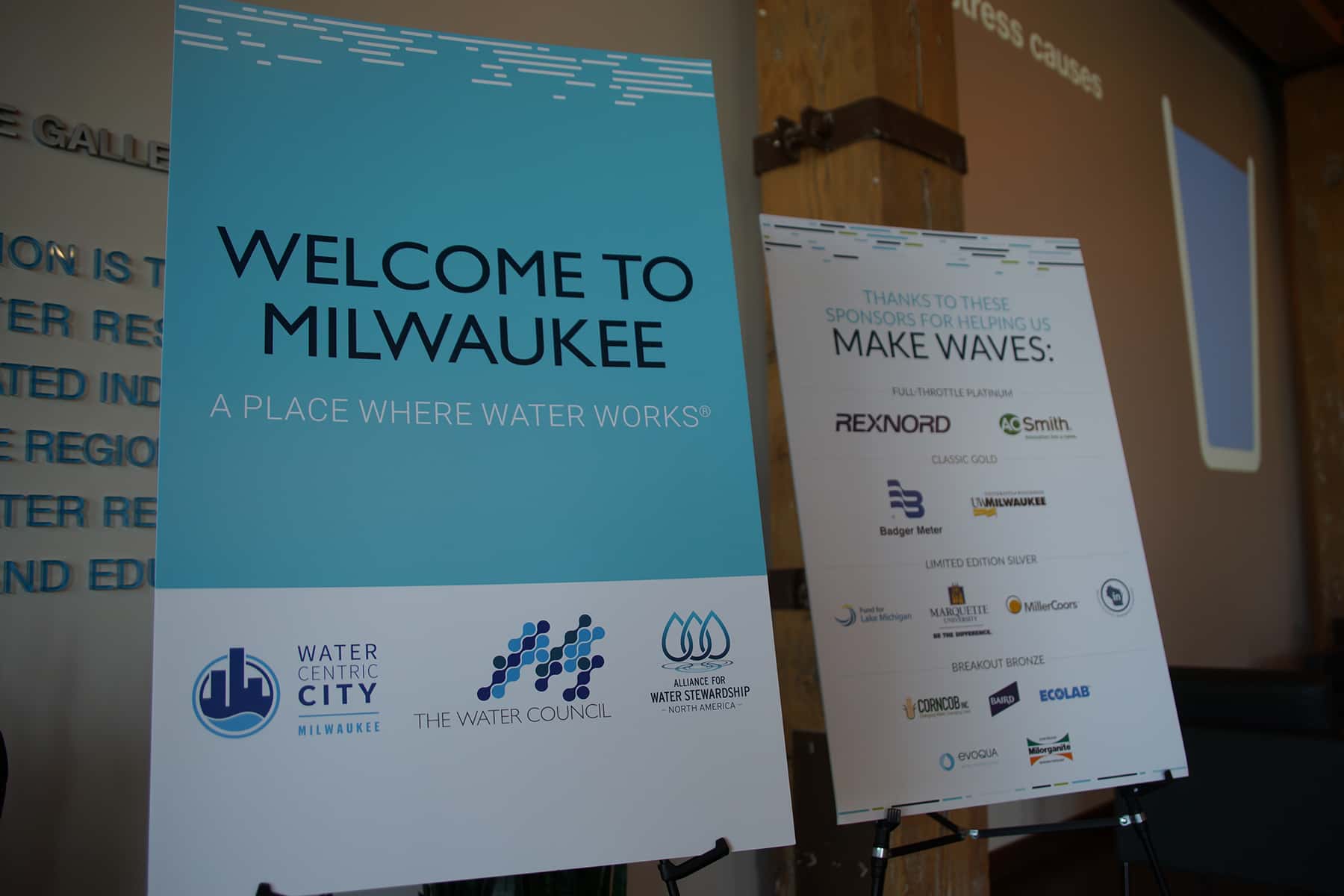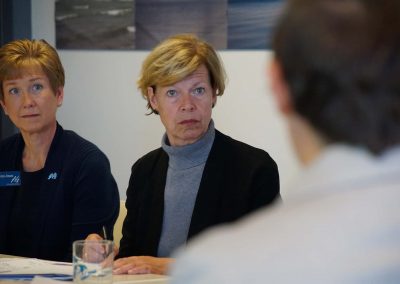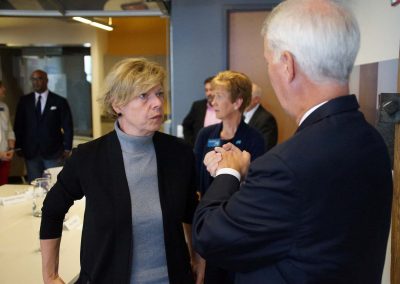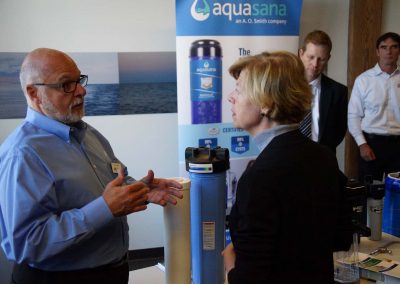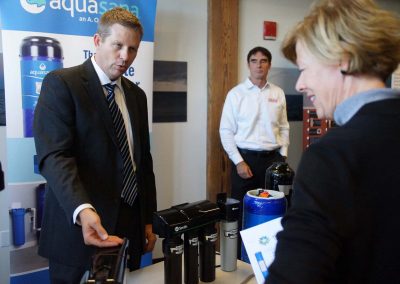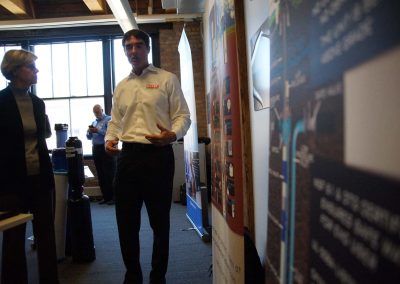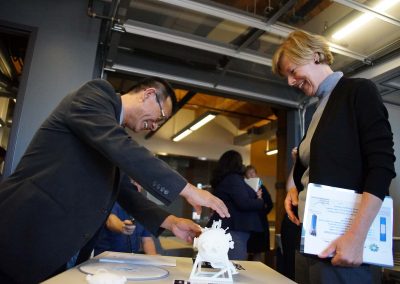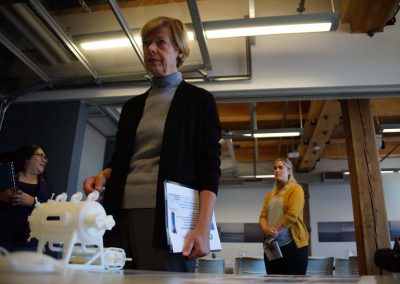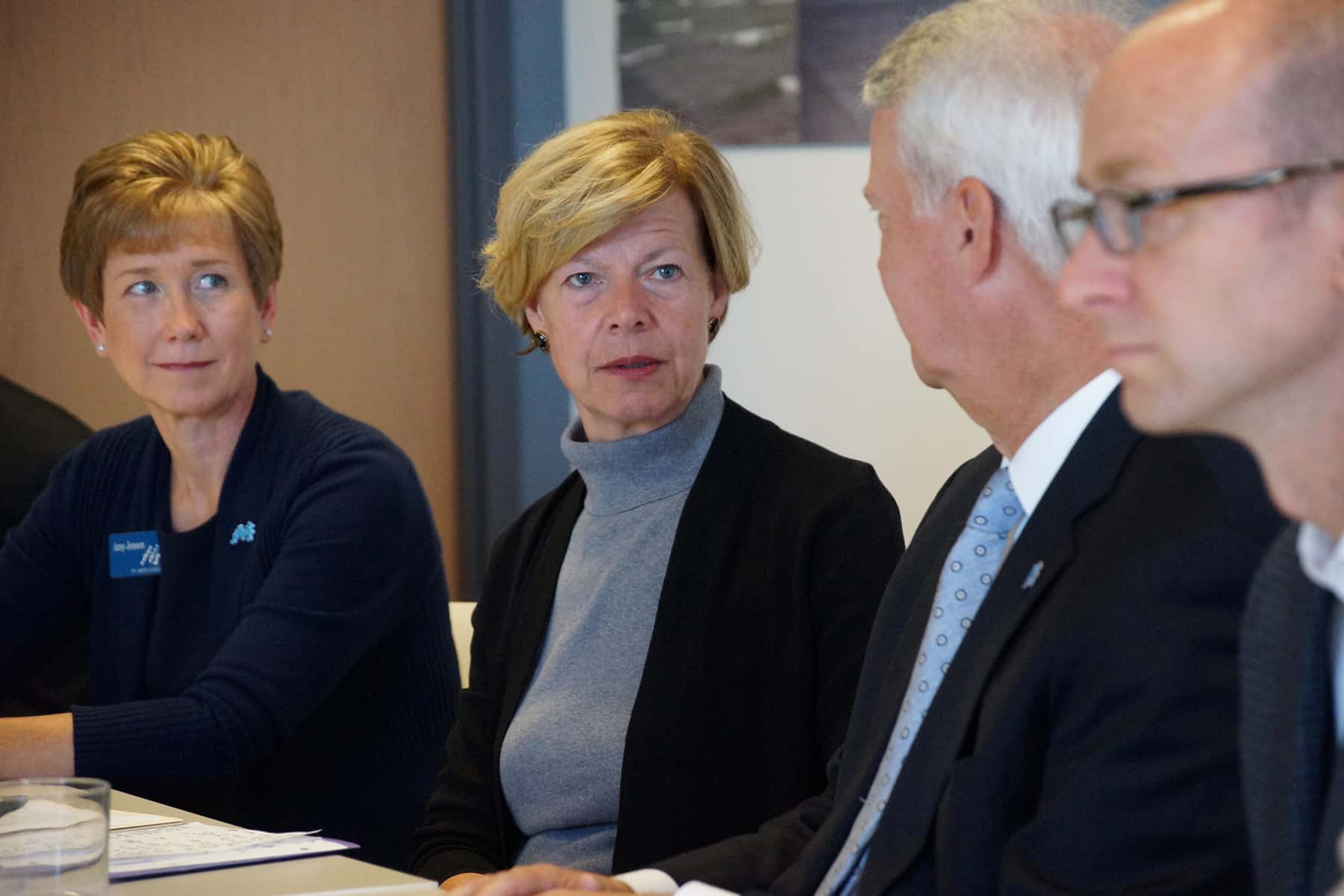
U.S. Senator Tammy Baldwin met with the Water Council and Wisconsin manufacturers on August 19 in Milwaukee to discuss emerging water technologies and efforts to protect the state’s drinking supply.
Senator Baldwin has previously drafted legislation for Congress to develop and install new platforms to treat problems with drinking water across the country. During her meeting in Milwaukee, she discussed strategies for how to champion new water technologies for detecting and treating water contamination.
Treatment incentives from Senator Baldwin’s original plan for wastewater and stormwater were left out of the Water Resources Development Act of 2018 that passed Congress and was signed into law by the President last year. But she has not given up on trying to convince Congress about adding the provisions to new legislation, because drinking water can still be contaminated by the runoff of incomplete sewage treatment.
“I am looking for ways at the federal level to help accelerate technological advances to keep our water supply safe and clean,” said Senator Baldwin. “One of the ways of doing that is to team up with folks to help write the Water Technology Acceleration Act. Portions of the measure have already been incorporated in the Water Resources Development Act. But we clearly have more to do as we discover and read headlines about new and more water challenges in our state. It speaks to me that we have to work ever harder to change policy.”
Senator Baldwin’s Water Technology Acceleration Act incentivizes the development and deployment of emerging water technologies to provide better solutions to our most pressing water challenges.
“In Wisconsin, we are leading the development of new water solutions. Our water technology partners, from our research labs to the many water, focused companies in our state are doing incredible work to find innovative ways to better test, monitor, treat and deliver water,” added Senator Baldwin. “We need to take advantage of their technological innovations to help us solve the water challenges we face across America in smarter, more effective ways, including changing how communities respond to water crises, improving public health and helping us address water scarcity.”
Elements of Senator Baldwin’s Water Technology Acceleration Act included:
- Creation of the Innovative Water Technology Grant program: These grants would fund public-private partnerships that deploy, test and improve emerging water technologies. Grants could be used to address water quality issues, such as new real-time sensors that can alert users when tap water is contaminated, improvements to residential filtration technologies that address groundwater contamination and piloting of technologies that treat manure on farms.
- Support for communities to use innovative technologies to address drinking water challenges: The bill would help communities deploy innovative technologies to address their drinking water challenges. Many communities face threats to the quality of their drinking water sources, and this bill would help them pilot solutions they would not otherwise have the ability to deploy. It would also help them to provide better information to residents, so that families can have certainty every time they turn on the water that the water coming from their tap is safe. The bill would require EPA to evaluate the barriers to greater adoption of updated water technology and provide technical assistance to help communities use new technologies successfully piloted elsewhere.
- Support for communities to use innovative technologies to address wastewater and storm runoff challenges: The bill would also support communities to pilot new approaches to wastewater treatment and storm runoff. Many communities face enormous costs to updating their systems to meet water treatment requirements. Water technologies can help reduce those costs to ratepayers by focusing investments on new approaches that achieve the same water quality improvements and may have additional benefits to the community and ecosystem. For instance, green infrastructure projects such as rain gardens and porous pavement can reduce the need for additional storm water storage structures, and also result in cleaner water as the storm water is better filtered before it drains into our rivers and lakes. The bill would require EPA to evaluate the barriers to greater adoption of updated water technology and provide technical assistance to help communities use new technologies successfully piloted elsewhere.
Manufacturers who joined Senator Baldwin included A.O. Smith, Badger Meter, Baker Manufacturing, and senior leadership of the Water Council. One innovative and low impact method for treating drinking water was presented by Rick Latella of DMRI. His company applies small amounts of heavy metals like zinc and copper to kill bacteria. Historically, silver was used for its antimicrobial properties for purifying water.
“During the turn of the last century people would have their children sit with a silver spoon in their mouth to wart off the plague. It was a natural way of killing bacteria without using chemicals to do it,” said Latella. “Even baby rattles had been made with silver, so a little of the metal would enter their bloodstream for protection.”
Senator Baldwin said that the meeting at the Water Council gave her many good policy suggestions to take back to Washington. One of the proposals would focus on a standardized test of water quality in homes. Not only could it identify lead issues, but help develop a database for understanding regional drinking water quality. Currently, home owners are required to conduct tests for radon, natural gas, mold, and other environmental issues.

